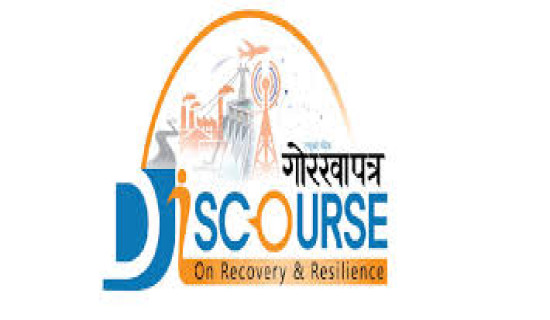- Thursday, 18 December 2025
Effective Management Of Medical Waste
Medical waste management has emerged as a critical public health and environmental issue, yet it remains inadequately addressed in many parts of the world. The rise in healthcare services and the corresponding increase in medical waste ranging from used syringes to expired medications pose significant challenges.
Many developing nations including Nepal face significant challenges in managing medical waste effectively. The healthcare sector has expanded rapidly in recent years, although, a positive development that has inadvertently led to a surge in medical waste. However, the systems in place for managing this waste remain woefully inadequate. Proper disposal of this waste is not just a regulatory requirement but an ethical obligation to protect both human health and the environment.
Problem
Healthcare facilities generate an enormous amount of waste daily, majority of which is hazardous. This includes syringes, used gloves, blood-soaked bandages, expired medications, and even radioactive materials. Unfortunately, the infrastructure to manage this waste is severely lacking. In many parts of the country, medical waste is disposed of alongside regular municipal waste, leading to significant risks of contamination and disease transmission. The COVID-19 pandemic further exacerbated this issue, with an increase in disposable personal protective equipment (PPE), testing materials, and other medical supplies.
The improper handling and disposal of these materials can lead to the spread of infections, environmental pollution, and even drug resistance. Yet, despite these risks, many facilities, especially in low and middle-income countries, lack the resources and infrastructure to manage this waste effectively. Open burning of waste, a common practice in many healthcare facilities, releases toxic pollutants into the air, contributing to respiratory illnesses and environmental degradation. Incineration, though effective in reducing the volume of waste, releases harmful toxins and pollutants, contributing to air pollution and climate change. On the other hand, inadequate disposal in landfills can lead to soil and water contamination, with long-term consequences for ecosystems and human health. Hence, the need for more sustainable waste management practices is undeniable.
The situation is particularly alarming in densely populated urban areas like Kathmandu, Pokhara, Biratnagar, and Nepalgunj where the sheer volume of waste exacerbates the problem. Scavengers, often including children, are at risk of injury and infection as they come into direct contact with hazardous waste. The lack of proper waste segregation and disposal mechanisms increases the likelihood of dangerous pathogens spreading to the broader community, posing a serious public health threat. Nepal's current medical waste management guidelines are built on international standards and aim to provide a framework for the safe disposal of hazardous waste generated by healthcare facilities. These guidelines cover various aspects, including waste segregation at the source, safe handling and transportation, treatment processes, and final disposal. They also emphasise the importance of training healthcare workers and ensuring the availability of necessary infrastructure, such as incinerators and autoclaves.
However, despite these well-intentioned guidelines, the reality on the ground paints a different picture. In many healthcare facilities, particularly in semi urban areas, waste is not properly segregated, and the infrastructure to treat waste safely is either outdated or nonexistent. As a result, medical waste often ends up in municipal landfills, untreated and posing serious health risks. One of the primary challenges in implementing these guidelines is the lack of awareness and training among healthcare workers. Many are not fully informed about the guidelines or do not understand their importance. This leads to poor practices, such as improper waste segregation, which complicates the treatment process and increases the risk of contamination.
Another significant challenge is the lack of resources. Many healthcare facilities, especially smaller clinics and district hospitals, do not have the financial means to invest in proper waste management infrastructure. The guidelines require facilities to have designated areas for waste storage, proper containers for different types of waste, and access to treatment technologies. However, without adequate funding, these requirements are often unmet. Furthermore, the monitoring and enforcement of these guidelines are weak. Regulatory bodies tasked with ensuring compliance often lack the manpower and resources to conduct regular inspections and take corrective actions. As a result, many healthcare facilities operate without adhering to the guidelines, with little fear of repercussions.
Solution
To address these challenges, Nepal must not only revise and strengthen its medical waste management guidelines but also ensure their effective implementation. This requires a multi-faceted approach. Firstly, the guidelines themselves need to be more detailed and specific, providing clear instructions on waste segregation, storage, transportation, and treatment. They should also take into account the diverse conditions across Nepal, offering practical solutions for both urban and rural healthcare facilities. Secondly, there must be a stronger focus on training and education. Healthcare workers at all levels need to be trained regularly on the importance of proper waste management and the steps they need to follow. This training should be mandatory and integrated into the professional development programmes of all healthcare workers.
Thirdly, the government must allocate more resources to build and maintain the necessary infrastructure for medical waste management. This includes investing in modern waste treatment facilities and ensuring that even the most remote healthcare facilities have access to safe waste disposal methods. Finally, enforcement mechanisms must be strengthened. Regulatory bodies should be given the authority and resources to conduct regular inspections and impose penalties on facilities that do not comply with the guidelines.
The management of medical waste is not just a logistical challenge but a critical issue with far-reaching implications for public health and the environment. The country cannot afford to ignore the environmental and public health risks posed by inadequate waste management practices. With the right policies, investments, and public awareness, Nepal can build a waste management system that protects both its people and its environment.
(Dr. Lohani is the executive director at Health Concern. lohanis@gmail.com)
















